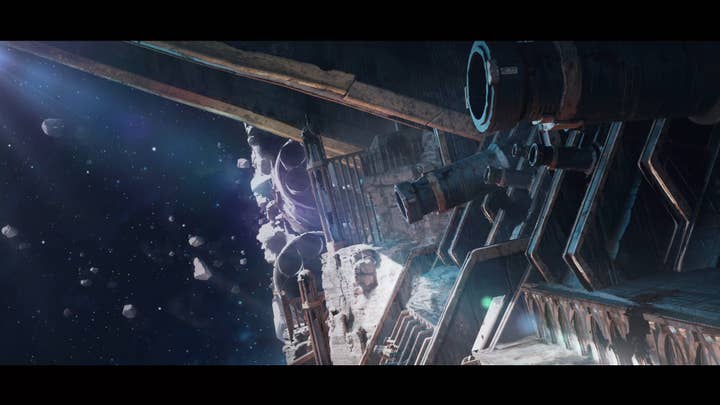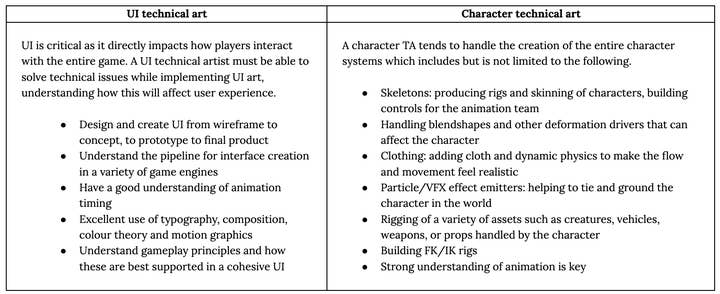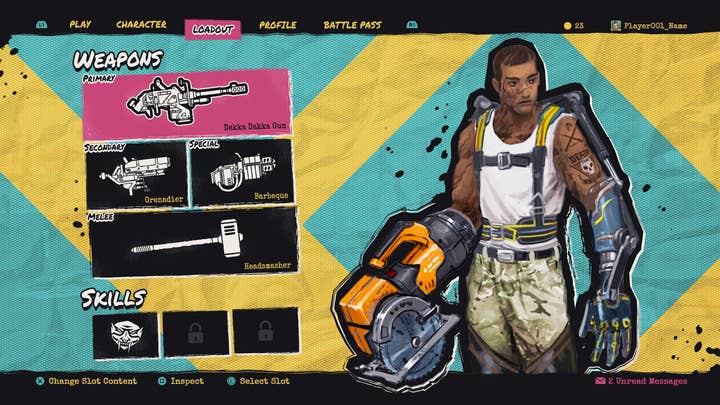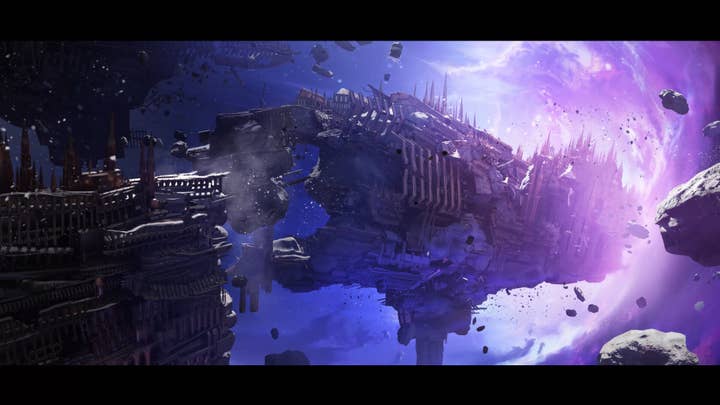An introduction to games technical art
Atomhawk's technical art director Liam Fleming explains what technical artists do and gives pointers on how to become one
As we highlighted in our GamesIndustry.biz Academy guide to becoming a game artist, there are a myriad of specialties existing within that wider art label.
From characters to UI, being an artist in games can require vastly different skillsets. One such specialty is technical art.
Before reading our full guide to finding a job as a technical artist, start here with technical art director at Atomhawk Liam Fleming giving us an introduction to the craft.
What does technical art entail?
"By and large, technical artists work as a bridge between artists and programmers," Fleming tells the GamesIndustry.biz Academy.
"More traditional art roles are usually focused on the creative side of the process, such as designing the characters, props, or environments, essentially defining an artistic vision, and executing on it by building the required assets. They home in on more traditionally artistic skills such as the ability to draw, design or sculpt.
"Technical artists ensure assets and pipelines are developed in such a way that the artistic vision remains as intact as possible"
"Technical artists on the other hand are more focused on ensuring assets and pipelines are developed in such a way that the artistic vision remains as intact as possible without exceeding the demands of the platform the game runs on."
Technical art roles are problem-solving positions, Fleming continues, explaining that they will solve these visual or artistic issues drawing on both programming and art skills, whether that's by pushing forward R&D, automating a pipeline, or enhancing the game's visuals or performance.
"In short, a technical artist is comfortable being dropped into any area tasked with improvement, breaking down, analysing, adapting, and directing the course of development," he adds.

Figuring out the daily tasks of a technical artist in games isn't an easy feat as it's a varied role that can become quite different depending on the size of the studio as well.
"Day-to-day tasks can vary from more visual tasks based around capturing a particular look and feel, to more process-based tasks creating new workflows or tools for the art team at large," Fleming explains.
"In my career, it has been tremendous to see what we have been able to achieve modifying lighting, shaders, post processes, materials and more -- it is possible to not just completely change the entire look and feel of game, but really elevate it to a whole new level of quality that really matches the art team's core vision."
"As an ever-growing field with evolving technology, it requires more and more targeted skillsets for any specialty area"
He highlights that there's often a misconception about what "technical" means in that job, with companies having varying interpretations of what a technical artist can be. There's also a lot of sub-categories of technical artists.
"Some consider an artist that can do any level of work in tools beyond the standard, such as making a custom shader, 'technical' -- while others see them as an offshoot of programmers.
"In reality, much like every other discipline, it is a multifaceted, multi-role skillset that covers a myriad of areas. While it is true that some core principles can and are shared across the differing TA roles, overall, there is usually a lot of variety. As an ever-growing field with evolving technology, it requires more and more targeted skillsets for any specialty area."
As an example, he provides the following table to compare the skills of a UI technical artist with ones of a character technical artist, which present a stark difference:

The path to becoming a technical artist
Like many jobs in the games industry, there isn't one unique straight path to becoming a technical artist. And, like many jobs in the games industry, your best selling point is your portfolio.
"Some people naturally arrive there from an art background or programming angle after joining the industry, but for those that already know it's the area they'd like to work in, it is best to use platforms like Linkedin and social media to demonstrate your portfolio and seek feedback," Fleming says.
"Follow companies or people that inspire you and be unashamed in reaching out for advice as much as possible. If you are just starting out, then hedge your bets using recruitment teams to get yourself heard. Ensure you have a strong targeted portfolio, clearly demonstrating problems solved in achieving a certain look, game performance level, or tool development. Finally make sure your portfolio is accessible and easy to find."
He adds: "Obviously the more focused industry development experience a candidate has the better, but we understand that this is not always possible. A strong showreel and portfolio are essential to get across your skills, and remember that it is always better to have quality over quantity."

A degree in computer science or game development is a solid foundation to become a technical artist, Fleming continues, suggesting to look for courses that focus on game engines as they provide a broad knowledge base to start with, and then allow you to focus in once you find your feet.
"Look for one that piques your interest and, if possible, seek a course taught by current veteran game developers, that way you will get the benefit of their knowledge and experience as there is always more than one way to achieve something.
"I would also advise, when looking at courses, that you ensure they include HLSL, C++, Python, Unreal Engine or Unity development, and a strong background in engine architecture and rendering pipelines.
"Often technical artists are asked to develop solutions that have never existed before, so there is need for a broad range of skills, adaptability, experience, and attention to detail to bring it all together"
"In addition to this, try to get your hands dirty with software packages that you are likely to use in industry such as Maya, 3ds Max, Photoshop, Z-brush, Substance painter, Substance Designer and Houdini. Understanding not just the tools artists already use, but a bit of art theory and the artistic process is essential to being able to develop the best solutions you will need on projects."
Strong problem-solving skills and the ability to think outside the box are key qualities to a good technical artist, Fleming says, more than their programming knowledge.
"Games development is an imperfect environment, so a flexible and adaptable attitude to the ever-changing landscape of development and its roadmap as well as a thirst for knowledge is key," he continues. "Often technical artists are asked to develop solutions that have never existed before, so there is need for a broad range of skills, adaptability, experience, and attention to detail to bring it all together.
"[I look for people] with a strong problem-solving mentality, who are able to think outside of the box and draw on their range of skills and experience from across the development pipeline, to ensure they meet the ever-changing challenges."
Concluding our chat, Fleming highlights the opportunities for career progression as a technical artist.
"Unlike many careers, technical art is one which opens the doors for an individual to get their hands dirty in many different areas of development. The landscape of progression for technical artists is an ever-changing and expanding one especially as more and more services adopt a real-time pipeline. It is the type of career which allows someone to move, learn and develop not only as an artist but as an individual without becoming stale."

